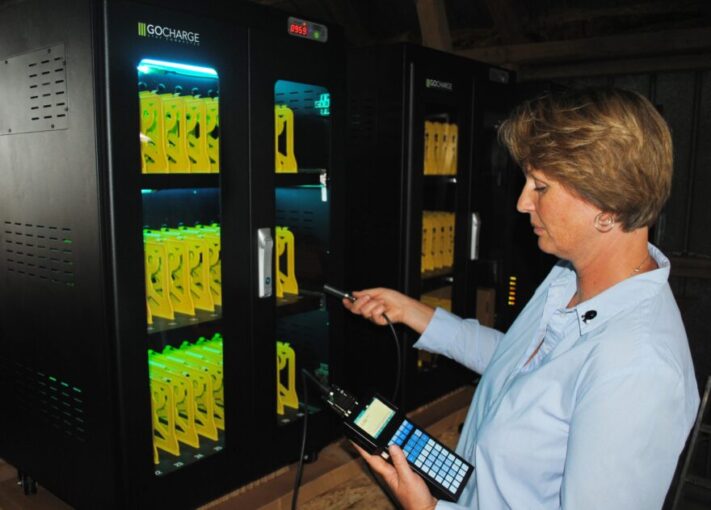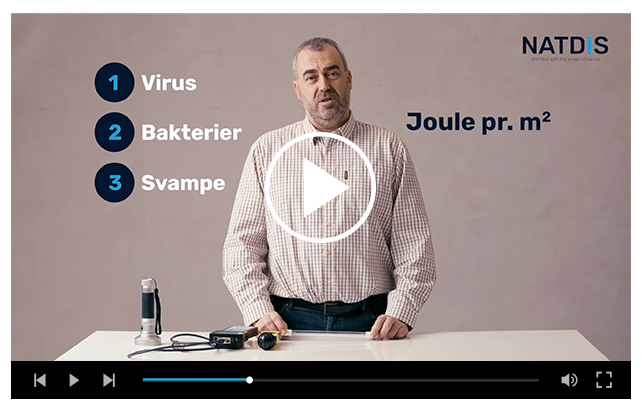Terminology
When you have a UVC lamp, it emits light with a given power. This is measured in W/m2 or mW/cm2.
When the lamp is lit on a subject or a pathogen over time (seconds), you get a dose. Dose is effect x time in seconds and is denoted by W x s/m2. It is the same as J/m2. It can also be expressed as mW x s/cm2, which is the same as mJ/cm2.
The power is used to calculate the length of time that a given lamp at a given distance must treat a pathogen so as to inactivate its DNA/RNA.
The effect of UVC
If you search the internet, you will easily find charts like the one below, indicating the dose required to inactivate a given percentage of a particular pathogen:
The chart lists the micro-organism in question and the dose required to achieve a 90% reduction: This is the correct way to indicate the effect, as you can subsequently calculate your lamp type, lamp size and length of time it must be lit to achieve the listed effect.
| Microorganism | Dose UV light in J/m2 to achieve 90% reduction | Microorganism | Dose UV light in J/m2 to achieve 90% reduction |
| Bacillus anthracis – Anthrax | 45,2 | Vibrio comma – Cholera | 33,75 |
| Clostridium tetani | 130,0 | Mucor racemosus A | 170,0 |
| Corynebacterium diphtheriae | 33,7 | Penicillium roqueforti | 130,0 |
| Ebertelia typhosa | 21,4 | Chlorella Vulgaris | 130,0 |
| Escherichia coli | 30,0 | Paramecium | 110,0 |
| Listeria Monocytes | 45,0 | Bacteriophage – E. Coli | 26,0 |
| MRSA | 32,0 | Infectious Hepatitis | 58,0 |
| Mycobacterium tuberculosis | 62,0 | Influenza | 34,0 |
| Pseudomonas aeruginosa | 55,0 | Brewers yeast | 33,0 |
| Pseudomonas fluorescens | 35,0 | Common yeast cake | 60,0 |
| Salmonella enteritidis | 40,0 | Saccharomyces spores | 80,0 |
What we are missing here is whether the effect in question has been obtained:
- Air
- In water
- On surfaces
There is a big difference in UVC effect in the three situations, and here too it will be the supplier’s experience and materials that can be decisive in finding the right dose.
General advice
- Generally, the lowest dose is required in air
- Generally, a medium dose is required in water
- Generally, the highest dose is required on surfaces
Therefore, it is important to be aware of how a given dose is calculated.
In the case of critical tasks, such as in food productions or pharmaceutical industries, it can be an advantage to test the effect of the UVC unit together with the supplier.
We are also happy to come and measure the effect of your system, and similarly, we always offer on-site control measurement of our solutions.

